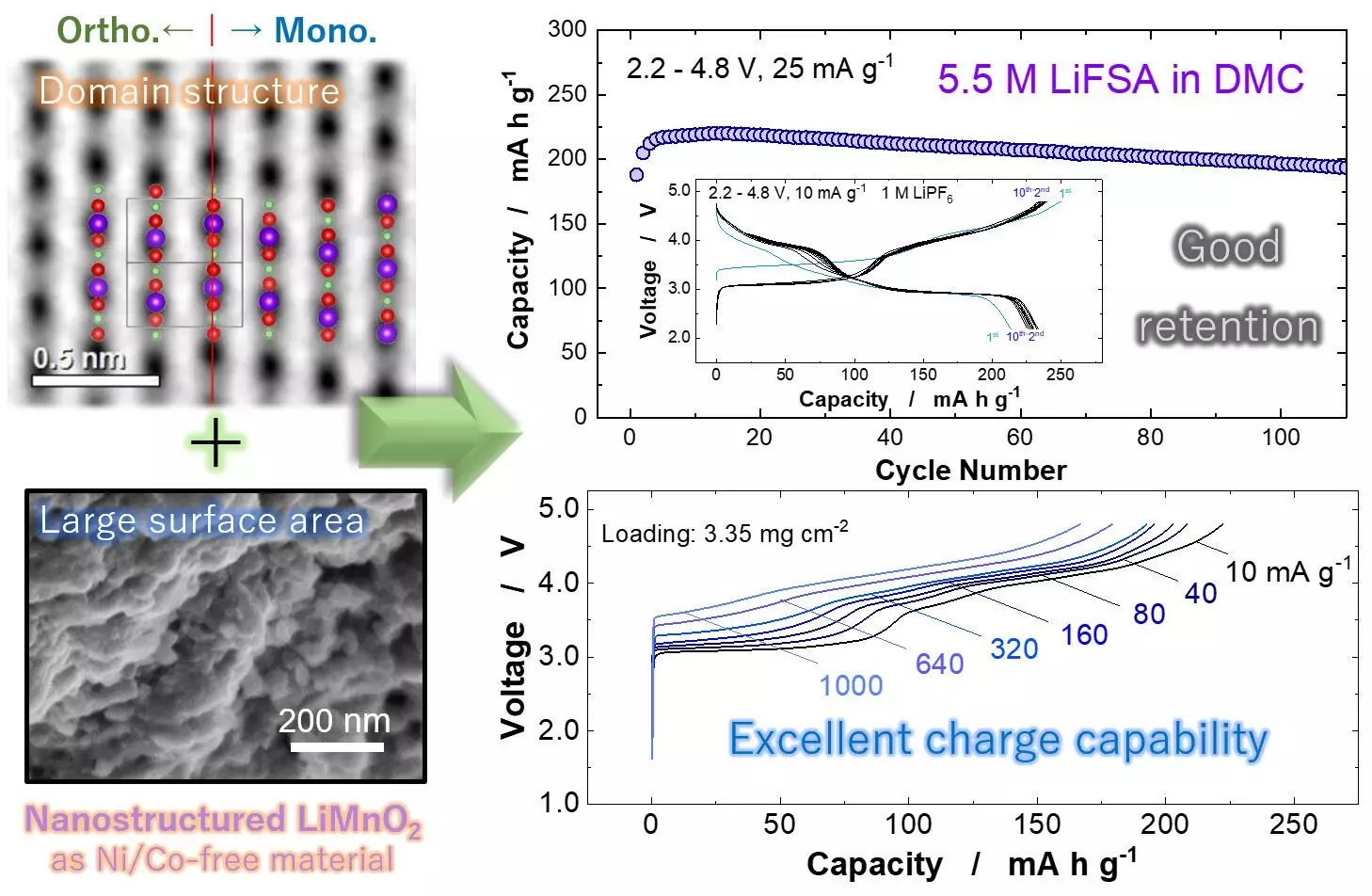The push toward electric vehicles (EVs) has instigated a seismic shift in the automotive industry, necessitating the development of high-performance batteries that are not only efficient but also eco-friendly. Current lithium-ion batteries predominantly rely on nickel and cobalt, which present cost challenges and raise sustainability concerns. As the demand for electric vehicles accelerates, there is a pressing need for innovative alternatives that utilize abundant materials to drive costs down while enhancing the sustainability quotient of battery technology.
A Breakthrough in Battery Chemistry
Recent research highlights a promising contender in manganese-based battery technology, specifically lithium manganese dioxide (LiMnO2). Traditionally constrained by suboptimal performance metrics, significant advancements have been made that could help turn the tide in favor of LiMnO2 in the competitive battery landscape. Researchers introducing nanostructured LiMnO2 with monoclinic layered domains underscore the potential for synthesized materials to surpass established norms. This development is pivotal—it not only improves performance but also utilizes a material that is more readily available compared to traditional nickel and cobalt options.
The Science Behind the Innovation
The transformation of LiMnO2 from an underdog to a potential frontrunner lies in understanding its polymorphic structures. The monoclinic layered domain plays a crucial role in enabling structural transitions that facilitate efficiency. Naoaki Yabuuchi and colleagues meticulously studied these polymorphs, revealing that the monoclinic structure can be optimized to enhance battery stability and performance. This strategic focus on the material’s crystalline arrangement evokes both excitement and a myriad of possible applications in consumer electronics and automotive innovations.
Moreover, the nanostructuring process enhances the surface area, allowing for faster charge and discharge cycles. The resulting energy density—an impressive 820 watt-hours per kilogram (Wh kg-1)—positions LiMnO2 as a viable competitor against nickel-based battery counterparts, which hover around 750 Wh kg-1. For consumers, this equates to better performance, quicker charging, and less frequent need for battery replacements, ultimately translating into enhanced product reliability.
Addressing Challenges through Chemical Engineering
While the prospects of manganese-based batteries are dazzling, one cannot ignore the challenges that lie ahead—most notably, the dissolution of manganese under certain conditions. This phenomenon can compromise battery life and efficiency over time, especially when exposed to phase transitions or aggressive electrolyte environments. However, innovative solutions such as employing highly concentrated electrolyte solutions and protective lithium phosphate coatings exhibit promise in mitigating these risks. Such advancements highlight a vital trend in the field of battery engineering: not only must we embrace novel materials, but we must also engineer them meticulously to endure the rigors of usage.
The Path to Commercialization
As researchers continue to navigate the complexities of battery chemistry, the ultimate goal remains clear: to integrate these advancements into the mainstream market. The automotive sector, especially the luxury electric vehicle market, stands at the frontier of this transition. High-performance, cost-effective, and environmentally friendly batteries could revolutionize how we perceive energy storage and usage. Sustainable practices are increasingly favored by consumers, and aligning profit motives with environmental stewardship can be a game-changer for manufacturers willing to invest in manganese-based battery technology.
As we stand on the brink of this technological breakthrough, it’s abundantly clear that the future of electric vehicles—and indeed, of portable energy storage—will not solely depend on traditional resources. Instead, it’s companies willing to innovate with alternative materials like LiMnO2 that will pave the way for a cleaner, greener future, demonstrating not only scientific ingenuity but also a commitment to sustainable practices, thus fostering a responsible energy transition.

